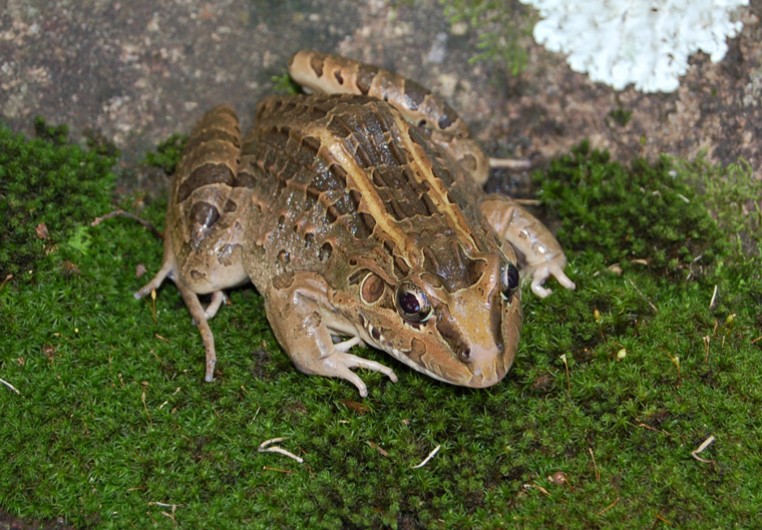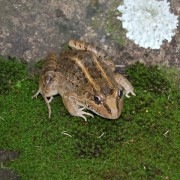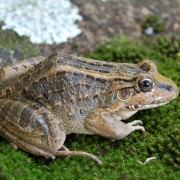Biodiversity
 Argus Frog
Leptodactylus macrosternum | Miranda-Ribeiro, 1926
Argus Frog
Leptodactylus macrosternum | Miranda-Ribeiro, 1926

Characteristics: Large species measuring about 9.0 to 11cm in length. This species features sexual dimorphism, males are larger than females and have robust arms. They are enjoyed by many people as food. They closely resemble the Leptodactylus cf. ocellatus in many ways, often being confused for them.
Distribution: Colombian Amazon, Venezuela, south of the Guianas, throughout Brazil, into Bolivia, Paraguay, and Trinidad and Tobago. In Brazil, in the southern and southeastern regions.
Habitat: Open formations, fields, pastures, edges of riparian and gallery forests, lakes, ponds, meadows, and swamps.
Habits: Crepuscular, nocturnal, terrestrial, and aquatic. Found, preferably, in grasses and herbaceous plants on the shores of wetlands and swamps.
Diet: Insects, arthropods and other amphibian species.
Breeding: Oviparous, spawning in foam nests on the surface of the water. Females care for both the eggs and the tadpoles. They usually also open canals, interconnecting puddles, thus preventing the tadpoles from getting stuck and dying from dehydration.
UFRA: Species considered infrequent and spotted in Organic Sugarcane Fields, Wetlands with Herbaceous Plants, Wetlands with Riparian Forests, Drainage Ditches, Woods in Spontaneous Regeneration.





